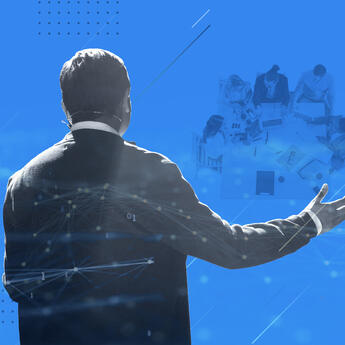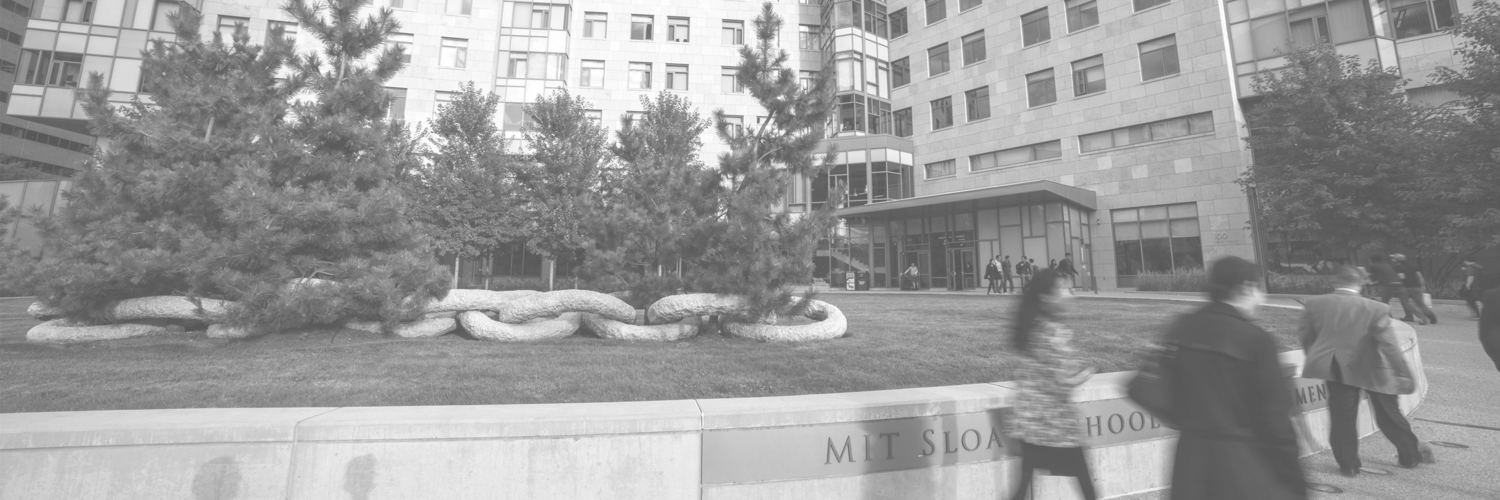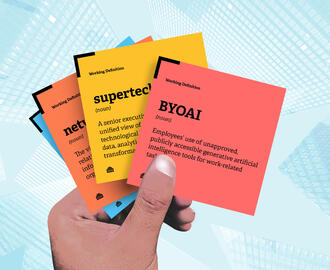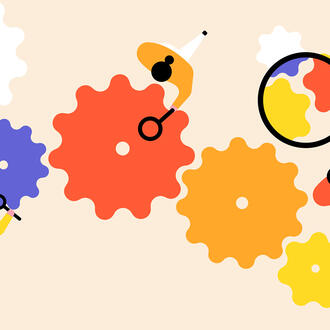Credit: Stephen Sauer
In their new books, MIT Sloan experts answer these questions and more:
- Why do talent management strategies go wrong in so many organizations?
- What are the economic limits of a moral life?
- How can we get rid of the stuff that gets in the way of real work?
New books from MIT Sloan experts this year examined the role of ecosystems in organizational success, the benefits of adopting dynamic work design, and the need to understand the cultural evolution of artificial intelligence.
Here are eight of them for your holiday gift list (or for yourself).
Accelerating Innovation: Competitive Advantage Through Ecosystem Engagement
MIT Sloan senior lecturer and associate dean for innovation
“Accelerating Innovation” guides leaders through engagement with innovation ecosystems so they can better derive value from both external actors and internal resources. Budden and Murray discuss five stakeholder types in these ecosystems that they identified in their research: research institutions, entrepreneurs, corporations, investors, and governments.
While Silicon Valley and Greater Boston garner a lot of attention as innovation hubs in the U.S., innovation ecosystems can develop anywhere, Budden and Murray show, as they examine sectors like quantum computing in Copenhagen, mining in Perth, and fintech in Cairo and Dubai, among many other examples. The frameworks and models they describe are applicable around the world, in organizations and ecosystems of every type and size.
The Analytics Edge in Healthcare
MIT Sloan professor of operations research Saïd Business School’s Agni Orfanoudaki, and Holly Wiberg of Carnegie Mellon.
Analytics is changing the way hospitals provide care and manage their operations. “The Analytics Edge in Healthcare” explains how to leverage data and models to make better decisions within the health care sector and explores ways in which analytics is driving decisions and outcomes. “We have developed a variety of tools at MIT and implemented them at hospitals around the world,” Bertsimas told MIT News. Use cases include:
- Managing patients’ length of stay and determining their risk of clinical deterioration.
- Optimizing time blocks for surgeries.
- Managing nurse optimization and helping hospitals allocate other human resources appropriately.
Disciplined Entrepreneurship for Climate and Energy Ventures
MIT Sloan entrepreneur in residence Ben Soltoff, professor of the practice , and senior lecturers and Libby Wayman
When Aulet published “Disciplined Entrepreneurship: 24 Steps to a Successful Startup” in 2013, he brought a foundational MIT entrepreneurship framework into the world for any founder to use.
But a climate or energy entrepreneur isn’t just any founder. In teaching MIT’s Climate and Energy Ventures course (formerly Energy Ventures), Aulet and other, later instructors found that the standard Disciplined Entrepreneurship framework didn’t fit so snugly in that sector.
So they built a new one. “Disciplined Entrepreneurship for Climate and Energy Ventures” adapts Aulet’s original framework with climate and energy entrepreneurs in mind.
Entrepreneurship: Choice and Strategy
MIT Sloan senior lecturer and professor with University of Toronto professor Joshua Gans
Building on more than two decades of academic research with thousands of companies and MIT students, the authors have developed a systematic approach for startup leadership that is now laid out in “Choice and Strategy,” a textbook written with practical use in mind.
The underlying theme of their work: A good idea may have multiple paths to value, but pursuing too many paths at the same time often does more harm than good.
After navigating the four domains of entrepreneurial choice — customers, technology, organization, and competition — startup founders are ready to explore the authors’ Entrepreneurial Strategy Compass, below.
The Meritocracy Paradox: Where Talent Management Strategies Go Wrong and How to Fix Them
MIT Sloan professor of work and organization studies
Organizations often hail meritocracy as a fair and efficient way to identify, advance, and reward talent. But efforts to create a level playing field can be held back by talent management systems that confer rewards based on individual performance evaluations.
In practice, these merit-based systems “may actually reinforce or create advantages for certain groups,” Castilla writes in “The Meritocracy Paradox.”
In one company field study, Castilla found that women, racially disadvantaged populations, and immigrants “earned a lower merit-based bonus than white men” despite working in the same jobs and work units, having the same supervisors, and obtaining the same performance scores.
Given such forces, Castilla encourages organizations to embrace a data-driven approach to meritocracy to address biases and inefficiencies hidden in talent management systems.

Leading Technical Professionals and Teams
In person at MIT Sloan
Get information
The Price of Our Values: The Economic Limits of Moral Life
MIT Sloan professor with HEC Paris professor Augustin Landier
Imagine that your government is proposing a new tax on clothing imported from nations that have weaker environmental and social standards than your country and don’t respect human rights.
How strongly would you support the tax, knowing that it would increase the price of clothing in your country by approximately 10%?
In their book, “The Price of Our Values,” Landier and Thesmar examine this question and others in an effort to articulate the interplay between our desire to be good, the personal costs of being good, and the point at which people abandon goodness due to its costs.
The economists find that the answers to modern moral dilemmas are often cost-driven and highly predictable. Our values may guide us, but we are also forced to consider economic costs when making decisions.
Shared Wisdom: Cultural Evolution in the Age of AI
MIT professor of information technology
Technological innovation works best when it’s grounded in collective wisdom. So argues Pentland in “Shared Wisdom,” which calls on business and policy leaders to build a digital society that protects individual and community autonomy.
In making his case, Pentland examines the effects of earlier artificial intelligence systems on society, among them:
- AI in 1960: Logic and optimal resource allocation emerge.
- AI in 1980: Expert systems automate tasks where specialists are expensive or scarce.
- AI in the 2000s: User data enables “collaborative filtering” that targets individuals based on their behavior.
Understanding both the impact and unintended consequences of those earlier systems can help us in developing technologies that aid, rather than replace, our human capacity for deliberation, Pentland writes.
There’s Got To Be a Better Way: How To Deliver Results and Get Rid of the Stuff That Gets in the Way of Real Work
MIT Sloan senior lecturer and professor of system dynamics
It’s a scenario that’s all too familiar: Monday morning, you make a list of important things you need to accomplish during the week. You work long, busy hours every day, but by Friday afternoon, you still haven’t crossed a single item off your list.
You may be caught in what Repenning calls a firefighting trap — stuck in a permanent state of crisis management while the real work of your organization remains undone.
In “There’s Got To Be a Better Way,” Repenning and Kieffer propose a new way of working — dynamic work design — that can help you break through static dysfunction, calm organizational chaos, and help ensure that all parts of a company are operating in concert. They show how replacing rigid systems with a dynamic workflow can improve organizational productivity, increase efficiency, and add motivation — and maybe even exhilaration — back into your workday.

Visual Management for Competitive Advantage
In person at MIT Sloan
Register now




